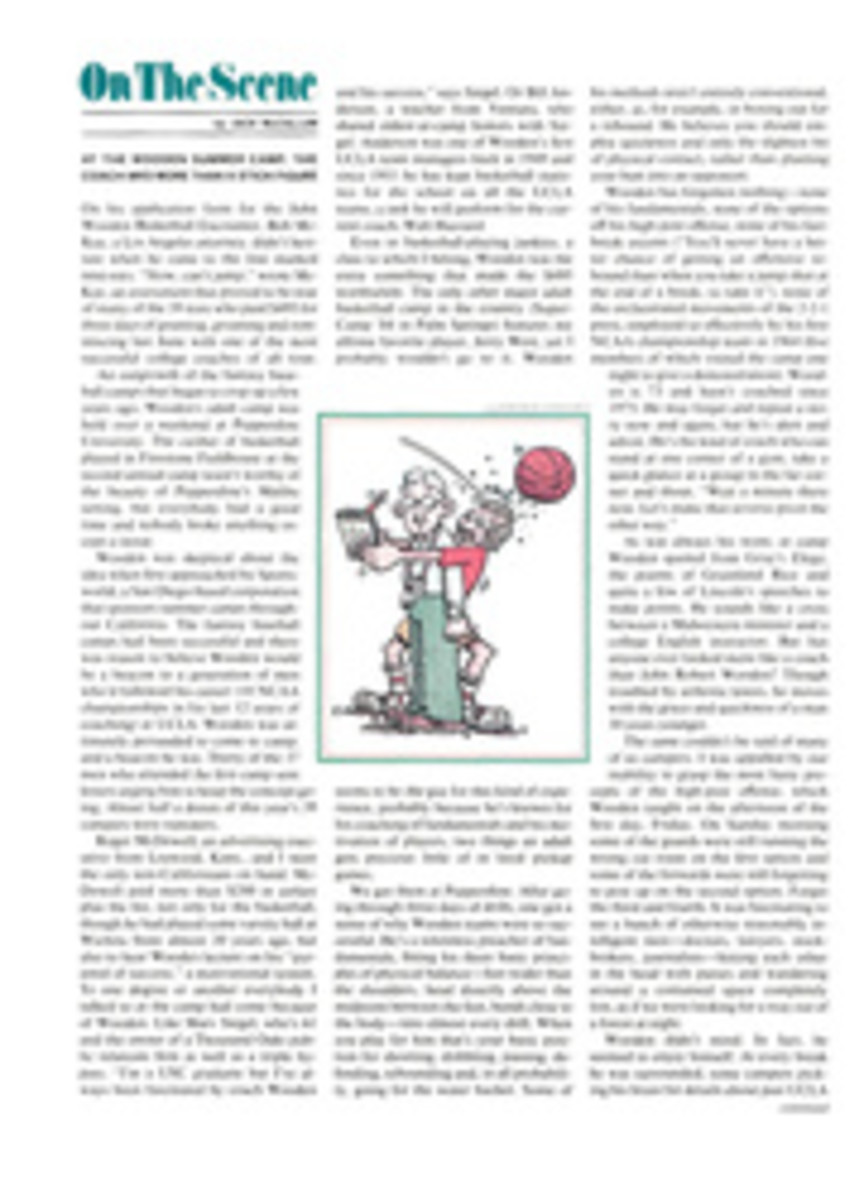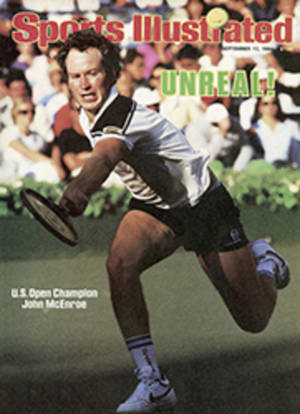
A COMPUTER SERVICE SCORES POINTS WITH A GOOD MANY TENNIS PLAYERS
During the 1982 Italian Open, a journalist asked Chris Evert Lloyd what she knew about her next opponent, the up-and-coming 18-year-old Lisa Bonder. "Absolutely nothing," she replied honestly. Who could learn the strengths and weaknesses of every player?
Today Evert Lloyd and 1,000 other players, domestic and foreign, know their opponents' games, and their own, far better because they subscribe to CompuTennis, a computerized analysis service based in Palo Alto, Calif. that provides printouts of as many as 100 pages on a match.
The service was founded by Bill Jacobson, a former South African amateur who had been applying computer technology to projects involving geophysical exploration. Late in 1982 he started charting tennis matches for his son Mark, a ranked junior in northern California. At first he fed hand-collected data into a microcomputer. He soon designed a four-pound portable computer with which a single observer could directly record 10 times as much data.
CompuTennis was on its way when several top junior coaches and the Stanford men's team bought computers on which to produce their own match reports. And last June the service was given a contract by the United States Tennis Association to chart matches for all four national junior teams—Davis Cup, Wightman Cup, Federation Cup and Davis Cup under 18.
Jacobson's computer program doesn't cover every shot in a match. Because players can rally for minutes at a time, the observer records only "key strokes": the serve and return, and the sequence of shots—up to five or six—that lead to the end of the point. The observer can describe the shots (i.e., half volley, passing shot) and note whether they're forehand or backhand, the zones of the court they travel between and the result (i.e., forcing shot, error).
There are console keys on which to record 10 other statistics, such as the number of times a player runs around his backhand. The analyst can also note the surface and weather conditions, and time each point. This fall, with an upgraded program, he will also be able to handle doubles matches.
Since printouts can be produced as a match progresses, television broadcasters can display and discuss constantly updated statistics. Indeed, the system is now available to broadcasters at almost every major tournament, although, perhaps afraid of befuddling viewers, they haven't yet dipped into the most sophisticated aspects of the analyses.
A complete match report provides a blizzard of statistics. Among its choicest categories are ratios of winners to errors for different strokes, tendencies to rely on certain strokes and success rates at the net and from the backcourt.
Working steadily, the CompuTennis staff has amassed a library of data. They've charted 2,100 matches involving more than 1,000 different players. Jacob-son studies this data like a theologian pondering Holy Scripture. He poses questions about tennis and then dives into the numbers for answers:
"Why has Ivan Lendl had more success indoors than out? Because outdoors he gets 20 percent fewer first serves in play than the average pro. He hits a flat, hard serve off a high toss, with very little margin for error, and outdoors the wind can really throw him off.
"Does Jimmy Connors have the best return of serve on the tour? Surprisingly, on returns of first serves, neither Connors nor anybody else can dominate. But Connors gobbles up second serves; his percentage of points won is 10 to 20 percent better than other top pros."
Using 48 categories of performance, Jacobson has divided tournament players, from juniors on up, into 25 levels of overall proficiency.
"The winners among the younger juniors are usually defensive players who don't make mistakes," he says. "But by age 18, when kids are bigger and stronger, the aggressive players rise to the top.
"Among the touring pros, the superior players are usually the ones with more reliable backhands. The better male players have significantly fewer backhand errors, and among the women, only Martina Navratilova and Evert Lloyd stand out on both backhands and volleys.
"On the women's tour—with the exception of Evert Lloyd—the ability to serve strongly is also critical. The victors serve 25 percent more winners and aces than the players they beat. On the men's tour, the difference is only 10 percent."
Dick Gould, the Stanford men's coach, has used CompuTennis to individualize training, scout opponents, change tactics during matches and convince players of the merits of his instruction. "In 1983 we were as low as Number 12 in preseason polls," says Gould, "and I had to deal with four talented freshmen who liked to hang back at the baseline. My computer data proved to them that they won 50 percent more points when they came in.
"Also, the computer showed them how to attack. For instance, the statistics unmasked one opponent's weak forehand return on second serves, so we went against conventional wisdom and picked on his forehand 90 percent of the time.
"By the NCAA tournament, we attacked more often and more purposefully. We wound up Number 1, and I give the computer a lot of the credit. The only problem is that USC and SMU, two teams we beat, are now CompuTennis clients."
Jacobson has provided data to Jimmy Arias and his coach, Nick Bollettieri, comparing Arias' performance against average players with his performance against the five highest-ranked competitors. CompuTennis found that his heavily used forehand produces winners 69% of the time against average players, but only 33% against the top players. The logical solution: diversify his attack.
Evert Lloyd's coach, Dennis Ralston, showed her CompuTennis statistics, which proved that, despite her notorious reluctance to come in, she won 15% more of the points when she was at net than when she was in the backcourt. Lately she has improved her game by coming in more often.
But Evert Lloyd and other CompuTennis clients like Barbara Potter and Kathy Jordan still haven't been able to go to the net with any great success against Navratilova. According to the computer, Navratilova simply attacks too fiercely; she has a wide lead on the tour in numbers of points won on first serves, and in hitting winners and shots that force errors.
Unfortunately for Navratilova's opponents, CompuTennis sometimes provides nothing more than a detailed picture of a hopeless cause.

